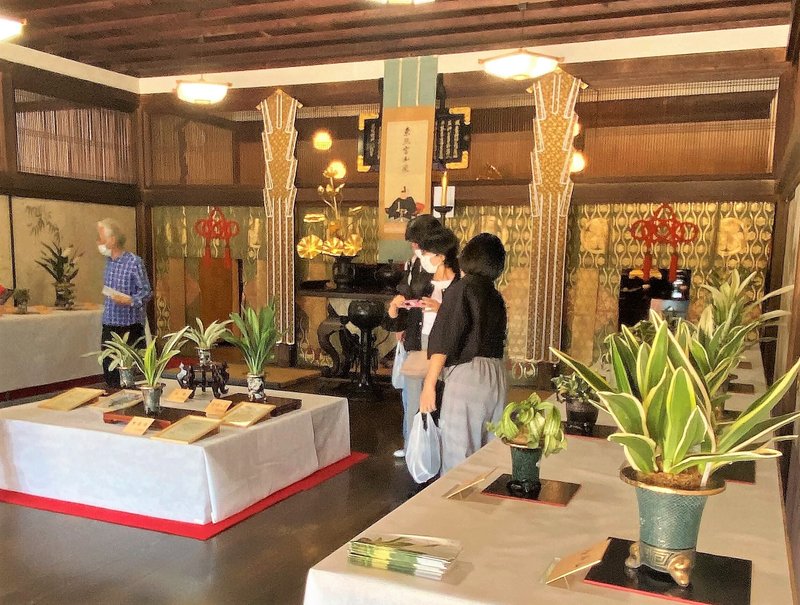
【~連載~静岡の歴史を学ぼう176】Omoto Part1 万年青(おもと)パート1
※ この記事は「静岡移住計画Facebook」に掲載しております。
万年青(おもと)は風水好きな人々が喜んで求めている植物です。家康公もこの植物を好みました。
コロナ前、日本文化に関心のある外国人の方が高額な盆栽や錦鯉を購入したように、今度はこの植物を購入されることが増えるかもしれません。
Omoto Part1
万年青(おもと)パート1
Omoto, also known as Japanese Rhodea, is an auspicious ever-green potted plant.
万年青(おもと)は縁起の良い常緑の鉢植えです。

臨済寺にて(静岡市葵区大岩町)
Many varieties of leaf shapes and patterns have entertained people and this plant became popular in the Edo period as a garden plant.
様々な葉の形と模様が楽しめ、この植物は江戸時代に園芸植物として人気となりました。
Tokugawa Ieyasu is well-known as a feng shui enthusiast.
徳川家康は風水が大好きだったことで良く知られています。

He believed that this idea could protect the country that had experienced continuous battles in the previous century.
この考えにより、前世紀に戦いが続いていた国を守ることが出来ると信じていました。
When he entered the Edo castle, he brought omoto to put on his futon side.
江戸城に入った時、家康公は万年青を持ち込み、布団のそばに置きました。
It was believed that putting omoto in the northeast direction drove away evil spirits.
北東(鬼門)の方角に置くことで魔除けになると信じられていました。

Many types of this plant were displayed in the main hall of Rinzaiji Temple on Oct.15, during its open house day.
10月15日、臨済寺の一般公開日、本堂にいろいろな種類の万年青が展示されていました。

The actual descendant plant from Lord Tokugawa Ieyasu’s was also showcased in the center of the hall.
徳川家康公が所有していた実物から株分けされた万年青も本堂の中央に展示されていました。
Mikawa region in Aichi prefecture is a big cultivator of Omoto plants.
愛知県の三河地方が万年青の大きな産地です。
Tokugawa family loved this plant, so the region where Lord Tokugawa Ieyasu was born has produced this plant even until now.
徳川家がこの植物を大事にしたため、徳川家康公が生まれたその地では今でもこの植物が育てられています。
参考資料:パンフレット「日本の観葉植物 おもと」 日本おもと協会・日本おもと業者組合 発行

この記事が気に入ったらサポートをしてみませんか?
